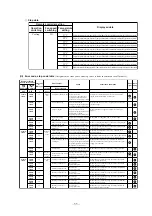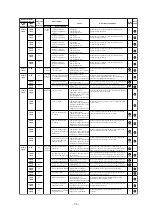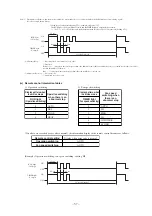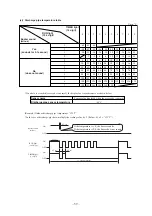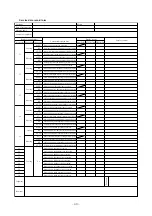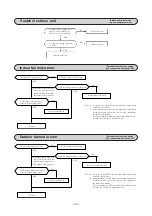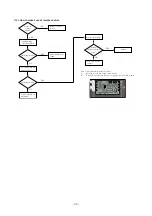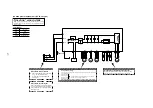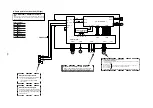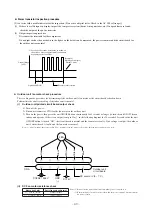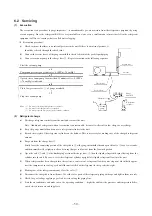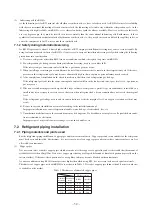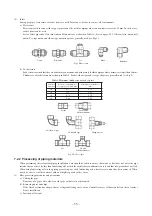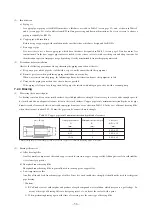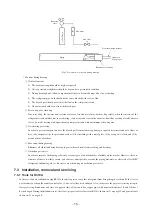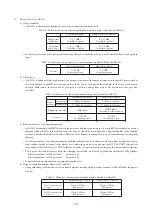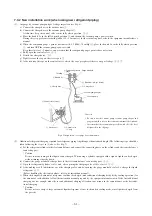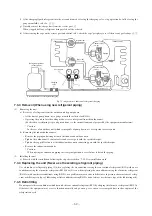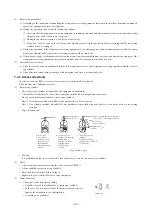
-
49
-
!
"#$ $%
& ' ( !
◆
Power transistor inspection procedure
' ) * $ " ) + $ ,
+ ) $% " ! % !
$$ $
-. + $ $ " / $ 0 1 2
4" "#$ $%, ! % ! ), + ! 0, 4" )! "$,
0 " +
( $
/ ! " !
4" + " )+ ) !$, + $ )$ "
$ !
(ii)
DC Fan motor resistance check
Notes (1) Remove the fan motor and measure it without power connected to it.
Notes
(2) If the measured value is below the value when the motor is normal, it means that the
fan motor is faulty.
Measuring Point
Resistance when Normal
6
–
4
(Red – Black)
25 M
Ω
or higher
3
–
4
(White – Black)
30 k
Ω
or higher
FM
O
Outdoor unit
circuit board
DC several V (4 ~ 7 V)
CNA
DC15V
DC308 ~ 336V
GND
(–)
Blue
Y
ello
w
White
Blac
k
Red
1
2
3
4
5
6
1
2
3
4
5
6
◆
Outdoor unit fan motor check procedure
This is a diagnostic procedure for determining if the outdoor unit’s fan motor or the circuit board is broken down.
Perform this check after checking if the indoor unit is normal.
(i)
Outdoor unit printed circuit board output check
1) Turn off the power.
2) Disconnect connector CNA for the fan motor in the outdoor unit.
3) Turn on the power, then press the unit ON/OFF button continuously for 5 seconds or longer (to turn the unit ON). When an
indoor unit operates, if there is an output from pin No.
2
in the following diagram for 30 seconds 20 seconds after the unit
ON/OFF button is turned “ON,” the circuit board is normal and the fan motor is faulty. If no voltage is output, the outdoor
unit’s circuit board is faulty and the fan motor is normal.
Note (1) After 3 minutes, the voltage at Pin No.
2
is output again one time for 30 seconds, then the indoor unit detects an error.

